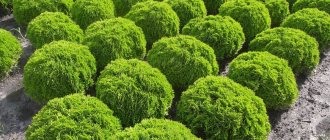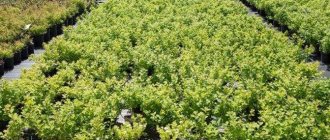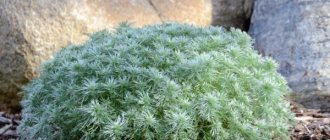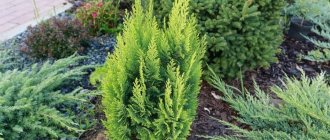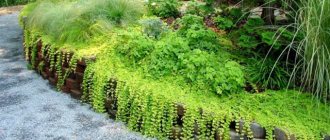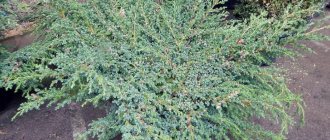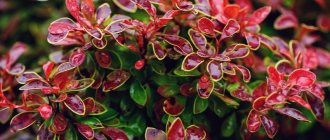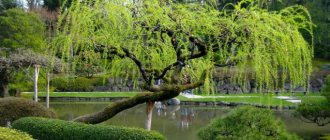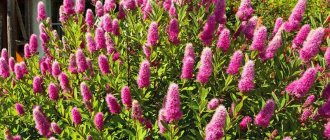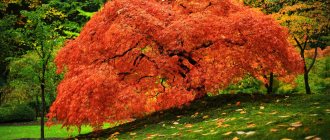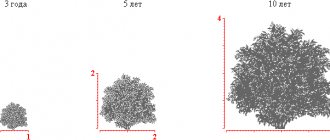Plants » Herbs
0
1014
Article rating
Kira Stoletova
The aromatic weed Steller's wormwood is today used as an ornamental plant for landscape design in gardens and summer cottages. There are several species that are planted to create compositions; caring for Steller's wormwood does not require any special costs.
Planting and caring for Steller's wormwood
Features and morphological description of Steller's wormwood
Steller's wormwood or Artemisia stelleriana is one of the most decorative varieties of this crop and is therefore most often used to create garden compositions. This familiar weed belongs to the general genus Wormwood and the large family Asteraceae or Asteraceae and is a low herbaceous perennial. Today, the genus Wormwood has simply a huge number of varieties that are found all over the world. In the literature, on average, you can find a description of about 400 species of this plant, including Steller’s wormwood. This culture is very unique, as it forms completely opposite opinions about itself. On the one hand, it is an annoying weed that is very difficult to remove from the site without special preparations. On the other hand, Steller's wormwood is a very beautiful and decorative ground cover bush that will be an excellent decoration for the garden.
The natural habitat of this variety of wormwood is considered to be the Far East, Alaska, Japan and even North America and Norway. In nature, Steller's wormwood prefers to grow on coastal slopes, seashores, river mouths and rocky cliffs. According to their characteristics and features, all varieties of wormwood are divided into several large groups and can be decorative, medicinal, fodder, and so on. Most species and varieties of wormwood, including Steller's wormwood, are popular medicinal plants, whose leaves, seeds and roots are used in the treatment of various diseases. In addition, it is worth noting that wormwood is used to prepare popular alcoholic beverages, such as vermouth and absinthe.
Steller's wormwood has many popular names that characterize both the appearance of the plant and its qualities: widow's grass, God's tree, Chernobyl. The scientific name comes from the Latin word Artemisia, which means “healthy” and characterizes the medicinal properties of the culture.
Description of Steller's wormwood:
- Steller's wormwood is an ornamental deciduous perennial herbaceous or shrub plant that is very popular among landscape designers and gardeners, along with Louis's and Schmidt's wormwood.
- It is a low-growing groundcover shrub that has the ability to spread over the soil surface.
- The height of wormwood bushes of this species can reach a maximum of 15-30 cm, and during flowering the total height of the plant is approximately 50-60 cm.
- The root system of Steller's wormwood is represented by a creeping rhizome, quite thick and woody, so it can be safely used for subsequent propagation of the crop.
- The bush is formed by spreading and creeping shoots, quite thick and tough. One plant can have 1-3 shoots.
- The vegetative shoots are densely leafy, the stems with inflorescences at the tops are erect and bare, significantly higher in height than the entire bush.
- The main decorative value of Steller's wormwood is its leaves, which have a very impressive and beautiful appearance.
- Leaves begin to appear on the plant in early spring and immediately begin to emit the strong aroma that is the main characteristic of all varieties of wormwood.
- This plant has different leaf shapes depending on their location. The lowermost leaves can reach approximately 7 cm in length; they are oval or wedge-shaped in outline, unpaired-lobed or deeply incised-toothed. The middle leaves of wormwood are pinnately divided or separate, attached to the stems with the help of short roots. The uppermost leaves can be trifoliate or entire, pinnately incised or lanceolate-linear.
- The divided blades, which can be rounded or oblong, slightly pointed or entire, give the leaves a special decorative appearance.
- All leaves have a silvery-white color, which makes the entire plant decorative throughout the season. The leaf plate is soft and silky to the touch.
- In appearance, the leaves resemble beautiful carved deer antlers.
- Dense felt pubescence is present not only on the leaves, but also on the stems of Steller's wormwood.
- Wormwood begins to bloom around July or August, but the flowers of this plant can hardly be called decorative. That is why many gardeners, when growing Steller's wormwood, cut off the flower stalks so that they do not spoil the appearance of the bush.
- At the tops of the flower stalks, baskets bloom, collected in loose inflorescences. The outer flowers bloom in the amount of 16 pieces, and the disc flowers - 30 pieces.
- The flowers of the plant are yellow.
- Steller's wormwood is highly frost-resistant; this plant can withstand frosts down to minus 40 degrees.
- It is also worth noting that this ornamental crop tolerates drought well. However, it is important to regularly rejuvenate the bushes so that they do not lose their decorative properties.
Using Steller's wormwood in landscape design
Steller's wormwood is an ornamental plant that is actively used by gardeners to decorate their garden plots. With the help of this plant you can create the most vibrant and unusual compositions and landscapes. Let's consider the main uses of this variety of wormwood.
- Since Steller's wormwood is a low-growing shrub, this variety can be planted as a border plant or to frame garden paths.
- You can use the plant to decorate rockeries and alpine slides in combination with other crops.
- Steller's wormwood will look great in rock gardens.
- Thanks to the constant decorativeness of wormwood foliage, this plant can be planted next to various flowers, thereby creating harmonious and beautiful flower beds and compositions.
- Alternatively, wormwood seedlings of this variety can be planted with other ornamental shrubs, for example, next to barberry.
Silver in the garden: decorative wormwood
In modern gardens, plants with silvery shades of foliage are increasingly gaining popularity, and therefore previously unnoticed perennials such as wormwood are entering the arena. Until now, only folk healers were involved in the intentional cultivation of wormwood, and summer residents, without hesitation, uprooted it like a weed. The reason for the close attention to the simple perennial was the previously bred ornamental varieties, which gave garden designers new opportunities. So I propose to re-acquaint yourself with wormwood more closely, but within the framework of the garden landscape.
In botany, wormwood is called Artemisia, which translated from Latin is very similar to the word “healthy”. After all, the healing properties of wormwood have found recognition not only among folk healers, but also in official medicine. In addition, this Latin name is also associated with the name of the ancient Greek goddess Artemis, who was always slender, young and full of strength. Also, wormwood is very hardy and grows in beautiful straight bushes.
It may come as a surprise to many that Artemísia, as a genus of herbaceous or subshrub plants, belongs to the Asteraceae family. For the most part, these are perennial plants with a powerful root system, but there are also annual species. In its natural environment, wormwood is very common in the temperate zone of the northern hemisphere, where it has conquered steppes and deserts. So, many different species of this plant grow in Central Asia, Transcaucasia, and Ukraine. Wormwood also lives in the rocky steppes of North America, South and North Africa. Therefore, this plant can be considered drought- and frost-resistant, which allows it to be grown on windswept, poor soils with scorching sun. In a word, wormwood is a steppe plant, and it needs appropriate growing conditions.
This plant can be considered drought- and frost-resistant, which allows it to be grown on windswept, poor soils with scorching sun.
wormwood in nature
Popular varieties of Steller's wormwood
Steller's wormwood has several varieties that differ in appearance and foliage structure. Let's consider the characteristics of the most popular varieties of this plant among gardeners and landscape designers.
- Steller's wormwood variety "Moris Form" . This variety of ornamental weed is perhaps the most common. It is a perennial plant in the form of a small bush 15 cm in height and up to 50 cm in diameter. The bush is formed by sterile shoots, which are densely covered with oval or spatulate incised leaves. The leaves have whitish pubescence. In July, a few erect flower stalks with dense yellow inflorescences grow. Steller's wormwood variety Maurice forms grows well in the sun and in poor soils. Used to decorate borders and stone gardens.
- Steller's wormwood variety "Silver Brocade" . Also a beautiful variety of decorative wormwood, which is used in landscape design. Thin shoots are densely covered with silvery pinnately cut, openwork leaves that are very similar to deer antlers. This variety has a specific bitter taste and pubescence of the leaf blade and stems. The bush can reach approximately 25-30 cm in height, and it grows very quickly. Leaves on the plant begin to appear immediately after the snow melts. Around June-July, the bush produces flower stalks with inconspicuous yellowish flowers. The variety is absolutely not demanding in care.
- Variety "Boughton Silver" . This variety of wormwood has another name - Silver Brocade. This is an attractive ground cover perennial that is perfect for planting along borders and in containers. The bush can reach approximately 20 cm in height, while its diameter can grow up to 50 cm. The plant has openwork decorative leaves located quite low.
Brief afterword: let’s repeat the most important information
- Steller's wormwood, like other types of wormwood, is an ornamental, that is, cultivated weed. It is valued for its grayish, whitish leaves, as well as its bitter smell.
- Varieties such as Maurice Form, Silver Brocade and Silver Brocade are grown on our plots.
- This species is propagated by cuttings, dividing the bush (the easiest way), and cuttings of rhizomes. There is an opinion that wormwood can also be grown from seeds, but this is not an option for amateur gardeners.
- You can plant it on poor soil, in a sunny area. Wormwood tolerates frosts down to -40 degrees.
- As for care, Steller needs frequent pruning and sometimes loosening the soil. In rainy summers you don’t even need to water it.
Did you know that the wild relative of wormwood (wormwood) is also a medicinal plant that is still respected by herbalists and herbalists? The herbalist will tell you what this herb looks like and in what cases it should be collected:
Reproduction of Steller's wormwood: the most common methods
Growing Steller's wormwood on your plot is quite simple, because this plant has a huge number of advantages and advantages, including ease of care. It is enough to know the features of the most suitable methods of propagating this crop and you can get beautiful plants in your garden. Wormwood of this species can be propagated in several ways: by cuttings, dividing the bush and cuttings of rhizomes. Let's consider the characteristics of these plant breeding methods.
Propagation of Steller's wormwood by cuttings
- Thanks to this method of propagation, you can immediately obtain a large amount of planting material.
- It is recommended to propagate by cuttings at the time of active growth of the bush, approximately in May-June.
- First of all, it is necessary to cut the cuttings, for which any parts of Steller's wormwood shoots are suitable: young and last year's ones, the apical parts or the central part of the stem.
- Using a sharp pruner or knife, cut cuttings 8-10 cm long, making sure to cut under the node. To avoid confusing the top and bottom of the planting material when planting in the future, it is recommended to make the bottom cut at a slight angle.
- Next, you need to prepare a small greenhouse or closed area in the garden for rooting the cuttings. A mixture of moistened sand and humus is perfect for this.
- After this, you can begin to root Steller's wormwood cuttings. It is important to adhere to certain rules: you need to root to a depth of no more than 3-4 cm, the distance between individual cuttings should be 5-8 cm.
- After planting, cuttings must be covered with glass or film for faster root formation.
- After about 15 days, roots will appear and the cover can be removed.
- Further care for young plants consists of moderate watering.
- The seedlings obtained by cuttings are transplanted to a permanent place only the next year.
Reproduction of Steller's wormwood by dividing the bush
- This method is used much more often, since in any case, once every 2-3 years, Steller’s wormwood bushes need rejuvenation. And for this, an adult plant needs to be divided into several young ones and planted in a permanent place.
- It is recommended to carry out propagation by dividing the bush in the spring around the end of April or early May, as well as in the fall from August to September.
- Using a shovel, you need to carefully dig up the wormwood bush and carefully place it on the grass. You can lightly shake off the soil from the root system.
- Next, you need to take a pruner and carefully divide the bush into several parts so that each division has a piece of rhizome and 2-3 strong and undamaged shoots.
- The cutting areas can be treated with charcoal, after which the cuttings are planted in a permanent place and watered abundantly.
Propagation of Steller's wormwood by rhizome segments
- Wormwood variety Steller can also be propagated using cuttings of rhizomes.
- In this case, it is not at all necessary to dig up an adult plant. This can be done if 3 years have not yet passed since the bush was planted, and you want to get a few more seedlings.
- The timing of such propagation is similar to dividing a bush: in mid-spring or late summer.
- Using a shovel, you need to carefully dig out the wormwood bush on one side, freeing some of the roots.
- Next, carefully cut off part of the rhizome with a shovel, which then needs to be divided into several sections so that each has 1-2 healthy buds.
- Plant the resulting sections of rhizome in a permanent place in previously prepared soil.
Propagation of Steller's wormwood by seeds
- This method of propagation is used much less frequently in relation to Steller's wormwood, since it is a perennial plant and mainly reproduces vegetatively. In the case of seed propagation, it is possible to obtain a young plant without retaining maternal characteristics.
- It is best to grow seedlings from seeds, which are then planted in open ground.
- Around April, Steller's wormwood seeds are sown in a greenhouse in dry soil. For successful germination of seedlings, it is necessary to maintain moderate temperature and lighting.
- After about 15-19 days, the seedlings will reach the size when they can be picked.
- It is recommended to plant wormwood seedlings 1-3 pieces in separate pots with a diameter of at least 10 cm.
- At the end of May or at the beginning of June, the grown seedlings can be transplanted to a permanent place in the open ground. However, some gardeners recommend planting young plants in a permanent place only the next year.
Planting Steller's wormwood - step-by-step instructions
Planting wormwood of this variety is quite simple and not tedious, but as a result, the ornamental plant will delight you with a beautiful and impressive appearance and will be an excellent addition to the garden composition. Let's consider a description of the main stages of planting.
Stage 1. Selection and purchase of Steller's wormwood planting material
- First of all, if you want to grow Steller's wormwood on your plot, every gardener needs to think about purchasing planting material.
- You can buy Steller's wormwood at any specialized garden center or nursery that breeds various plants.
- You can purchase crop seeds, as well as grown seedlings and full-fledged seedlings in pots with a closed root system.
- If you have the opportunity to grow plants from seeds, you can purchase this planting material. If you want to get an adult plant in a faster way, it is recommended to buy ready-made seedlings, which go on sale around April or May.
- Before purchasing, be sure to carefully check the planting material. Seedlings and saplings must be without damage, without signs of drying and rotting. When purchasing seedlings in pots, make sure the soil is in excellent condition - there should be no signs of mold.
Stage 2. Choosing a planting site for Steller's wormwood
- At the next stage, it is important to choose a suitable place on the site for planting this crop.
- Steller's wormwood has beautiful silvery foliage, so open sunny places are suitable for it, although seedlings can thrive in light partial shade.
- This plant will grow well in slightly elevated places where there is no stagnation of water, which can have a detrimental effect on the root system of the crop.
- You can choose rocky or sandy terrain, which is also ideal for this type of wormwood.
- When choosing a place for planting, be sure to keep in mind that this is a low-growing plant and is most suitable for planting along borders and garden paths.
Stage 3. Selection and preparation of soil for planting Steller's wormwood
- Light and loose soils are suitable for growing this crop, preferably depleted and without a high content of humus and nutrients.
- In addition, it is important to select areas with neutral soil. When this indicator changes towards acidity, it is necessary to add a little lime to the soil.
- You should not plant Steller's wormwood on clayey and highly moist soils, as this can lead to root rotting.
- Before planting, you need to carefully dig up the area and add a little sand to it for looseness. There is no need to add organic matter or other fertilizers, with the exception of a small amount of humus.
Stage 4. The process of planting Steller's wormwood
- Wormwood seedlings are planted in open ground around the end of April or early May, when the threat of return frosts has passed.
- Before planting, prepare planting holes, the size of which should be slightly larger than the root system of seedlings with a ball of earth. In this case, it is important to leave a distance of 25-30 cm between individual plants. If you plant seedlings in several rows, then you must also leave a space of about 50-60 cm between them.
- At the bottom of the planting holes, you can place a layer of mulch in the form of small stones or gravel to prevent stagnation of water at the roots, which is detrimental to this crop.
- If the seedlings were purchased in pots, then be sure to spill water before planting to make it easier to remove the plant.
- If you do not want the plants to quickly grow in all directions, it is recommended to limit their root system. To do this, when preparing planting holes, you can dig pieces of slate or other limiters around the perimeter. There is another option: plant wormwood in a container and dig it into the ground.
- After planting, be sure to water the plants.
Characteristics
Scientists believe that the generic name Artemisia comes from the Greek goddess Artemis or from the Greek word meaning “health.” Different types of artemisia in ancient times and to this day are used in folk medicine in many countries. The most famous “green healers” are wormwood and bitter. Tarragon has nutritional value, and Chernobyl is a valuable raw material for obtaining essential oil.
Steller's wormwood is a relatively low plant, length is 15 - 40 cm. The foliage of different varieties is painted in combinations and shades of gray, silver, blue and steel colors. Artemisia Steller's flowering begins in mid-summer. Long stems grow, at the end of which complex inflorescences form. It is better to trim the flower stalks at the very beginning, since small yellowish-gray baskets do not have much decorative value.
Wild wormwood is considered one of the “champions” in terms of endurance. They easily adapt to extreme natural conditions, growing in wastelands, dry mountain slopes, and semi-deserts. Modern varieties of artemisia require more moisture and nutrients than the natural variety. Steller's wormwood prefers well-drained, light soil, without drying out or waterlogging.
Agricultural technology for growing Steller's wormwood: secrets and nuances of care
Wormwood of this variety is considered an unpretentious and easy-to-care plant that even a novice gardener can grow.
- Watering. The first two weeks after planting, young Steller's wormwood plants need regular watering. This is necessary for rooting and establishment. However, in the future, watering is almost completely canceled. It is enough to water with a small amount during the driest periods of summer. It is generally not recommended to spray bushes. Wormwood will lose its decorative properties due to a large amount of moisture.
- Loosening and mulching. Periodically, each wormwood bush needs to be loosened and weeds removed around it, which will saturate the soil with oxygen.
- Plant nutrition. Steller's wormwood prefers to grow on poor soils, so it does not need fertilizing at all. Fertilization in a sense is even contraindicated for wormwood, since its leaves and the shape of the bush lose their decorative properties.
- Trimming. Steller's wormwood shoots grow very quickly, the bush is constantly growing, so it is important to trim regularly to maintain a compact shape. Gardeners also recommend cutting off flower stalks at the beginning of flowering so that they do not impair the decorative appearance of the bushes.
- Disease and pest control. Wormwood has good resistance to pests and diseases, so it is important to regularly follow the rules of care so as not to cause harm.
What care does the culture need?
This fragrant plant hardly gets sick. Pests also rarely attack wormwood.
This ornamental crop requires only three levels of care:
- Watering. In order for freshly planted sprouts to take root, they need to be watered regularly for the first 2 weeks. Further, if it rains from time to time in the summer, watering can be stopped completely. Only take out the watering can during the driest periods. This crop does not need spraying.
- Mulch, loosening the soil. Fluffing the soil will allow air to get to the roots.
- Trimming. The plant must be tamed often, shortening its shoots, so that the flowerbed does not turn into a solid gray blob. It would also be a good idea to remove the flower stalks (but this is not necessary).
There is no need to fertilize this plant. Surprisingly, the added nutrients deteriorate the shape and color of silver wormwood leaves.
What plants can “make friends” with wormwood in a flowerbed?
Depending on your preferences, Stellera can be mixed in one area with both other semi-wild flowers and noble roses:
This plant is also used as:
- border plants framing paths and sides of flower beds;
- “resident” of rockeries and alpine hills;
- partner of ornamental shrubs (say, barberry).
By the way! In addition to wormwood, there are other cultivated weeds that may interest you. But before you plant such a flower on your site, be careful: all of these plants (especially goldenrod) are not at all gentlemanly in nature, and if you give them a little free rein, they will begin to take over the yard .
Steller's Wormwood - photo
Steller's wormwood is an ornamental weed that will be an excellent decoration for any garden plot. In addition, planting and caring for this crop is quite simple; you just need to plant the plant in the garden bed and admire its spectacular appearance.
